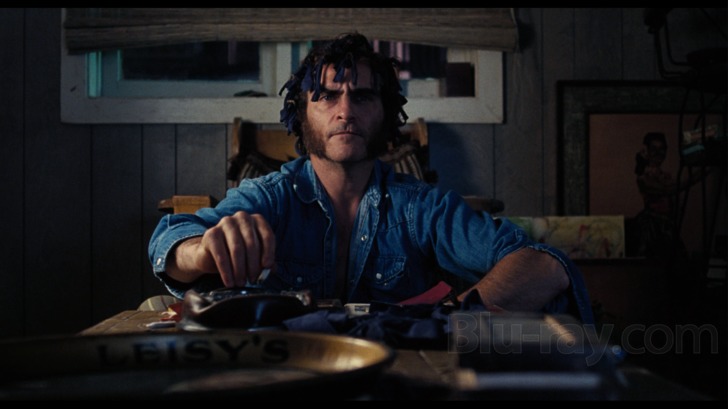The cinematic universe lost another star this weekend with the passing of the stunning Anita Ekberg at the age of 83. Born in Sweden, Ekberg did some modeling and light acting in America before being “re-discovered” by Federico Fellini in Italy when the director cast her in La Dolce Vita. Ekberg quickly became a commodity in Europe, making movies in just about every genre imaginable. In 1969, the beautiful bombshell dabbled in the horror world by starring in the vampire tale Fangs of the Living Dead.

Fangs of the Living Dead features Ekberg as Sylvia Morel, a successful model who lives in Rome with her fiancé, Dr. Piero Luciani (Gianni Medici from Killer Without a Face, although he is credited as John Hamilton). One day, Sylvia receives word that she has inherited an old castle, so she travels to the secluded countryside to check it out. At the castle, she meets her Uncle, Count Walbrooke (Julián Ugarte from Frankenstein’s Bloody Terror), who shows her a painting of her Grandmother, Malenka, of whom Sylvia is the spitting image. Walbrooke tells Sylvia that Malenka was a scientist who had discovered the secret to immortality, and was burned at the stake for being a witch because of it. Walbrooke explains to Sylvia that Malenka was able to transform people into vampires. Walbrooke convinces Sylvia to break off her engagement to Piero and stay at the castle with him and his beautiful harem of female vampires. Sensing trouble, Piero comes to rescue Sylvia, but it may be too late…for both of them.

Written and directed by Amando de Ossorio (Tombs of the Blind Dead, Return of the Evil Dead), Fangs of the Living Dead is a great example of the type of horror that was coming out of Europe in the late sixties; it’s brilliant in its cheesiness. The film is poorly dubbed (a probable symptom of being shot in three different languages), campily acted, and written in a way that borders on the silly, but that’s all part of its charm. Fangs of the Living Dead entertains by exploiting the trend that Universal and Hammer created with their Dracula movies, and it does so in a way that’s loads of fun.

Fangs of the Living Dead was originally called Malenka: The Niece of the Vampire, but the name was changed ostensibly to capitalize on the success of George Romero’s Night of the Living Dead. In fact, in America, Fangs of the Living Dead was stuck onto a triple bill called Orgy of the Living Dead with two other films that were retitled to include “Living Dead” in their names: Curse of the Living Dead (which is actually Mario Bava’s Kill Baby, Kill) and Revenge of the Living Dead (formerly Elio Scardamaglia’s The Murder Clinic). The “Living Dead” in the title of Fangs of the Living Dead refers to the vampires as opposed to Romero’s zombies, but the bloodsuckers in the film aren’t particularly dead looking; they are actually very vibrant and alive in appearance, the only telltale sign of their undead status being the fangs that fill their mouths when they smile. There is much more fang than living dead in Fangs of the Living Dead.

Anita Ekberg is the obvious lead in Fangs of the Living Dead, and her performance is exactly what one would expect from an ex-model who turned to acting. Ekberg was most likely cast for her beautiful looks, as evidenced by the presence of additional gorgeous actresses such as Diana Lorys (The Awful Dr. Orlof) and Rosanna Yanni (Count Dracula’s Great Love), but Ekberg does get to show off a bit of her ability. She overacts wonderfully, wringing every ounce of melodrama out of the soap-operatic screenplay. It’s the type of performance that proves the way in which roles in horror movies can play to actresses’ strengths; Anita Ekberg’s indulgent portrayal of the damsel in distress is perfectly fitting for the schlockfest that is Fangs of the Living Dead.

For the cinematography in Fangs of the Living Dead, Amando de Ossorio turned to director of photography Fulvio Testi (Emergency Ward, I Do Not Forgive…I Kill!). Testi gives the film its obvious Eurohorror look, shooting in bright Technicolor with plenty of fun angles and camera movement. The photography of the film is actually 0quite creative; the film has a visual identity all its own while still managing to fit in with the European genre of horror. He even tips his hand towards the inherent campiness of the picture in a silly scene with a huge shadow of a cardboard bat that shines through a curtained window. It’s all part of the spectacle that makes Fangs of the Living Dead a hip and cool flick.

Speaking of hip and cool, the soundtrack to Fangs of the Living Dead is downright groovy. The score was written by Carlo Savina (Lisa and the Devil, The Legend of Blood Castle), and it mixes sixties beatnik tunes with plenty of spooky pipe organ music. The music is rhythmic and driving, yet pauses long enough to let out a scary stinger every now and then when it’s warranted. It’s a genius combination of pop music and film score, and it works amazingly well. The score to Fangs of the Living Dead only adds to the fun of an already enjoyable movie.

Anita Ekberg enjoyed a long and storied career that spanned more than fifty years. Her resume includes film by heavyweight directors like Federico Fellini, King Vodor, and Robert Aldrich, but horror fans will always remember her fondly for her roles in films like Fangs of the Living Dead.

